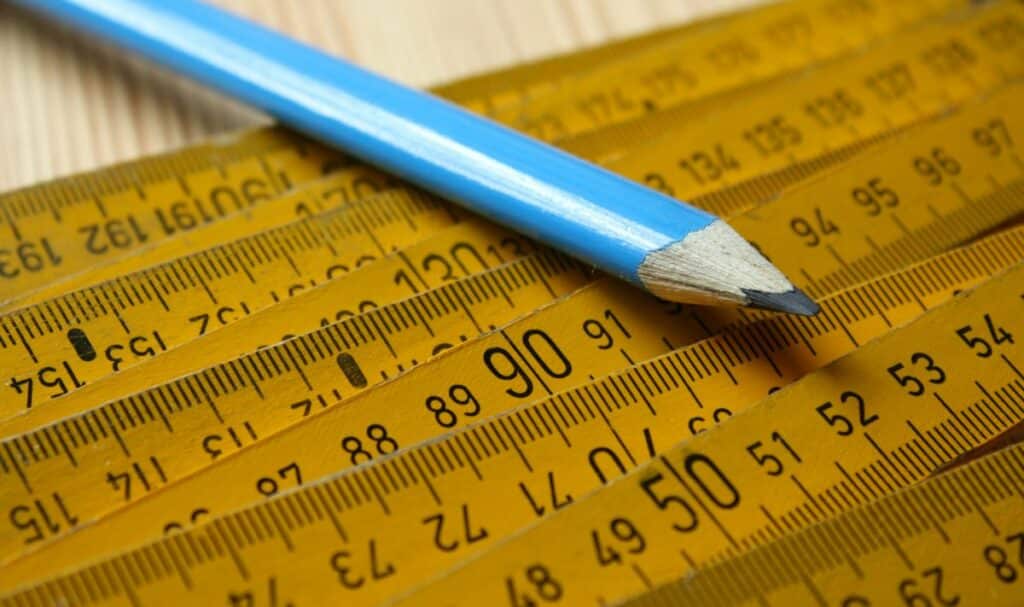the essentials in brief
A 55 inch TV is usually between 121 cm and 135 cm wide and between 68 cm and 77 cm high. Read more here...
The length and width of a 50 inch TV usually varies between 110 cm and 121 cm in width and between 62 cm and 68 cm in height. Read more here...
The difference between a 50-inch and 55-inch TV is the screen size, with a 55-inch TV having a larger diagonal of approximately 139,7 cm compared to the approximately 127 cm of a 50-inch TV . Read more here...
Today's blog post deals with a question that many of us ask ourselves when we are faced with the decision to buy a new TV: How many centimeters is 55 inches? The screen size of a TV plays an important role in choosing the perfect model for your home. Here you will not only find the exact conversion from inches to centimeters, but also some exciting information about the TV size that will help you with your decision.
Contents
Inches to Centimeters - A simple conversion

Converting inches to centimeters is a handy skill that helps us better understand the size of objects. Especially with electronic devices such as televisions, monitors or smartphones, it is important to know how many centimeters a certain number of inches corresponds to.
To convert inches to centimeters, we use a conversion factor of 2,54. This factor is based on the definition of inch originally derived from the English system of measurement. One inch is exactly 2,54 centimeters.
Suppose we have a 55 inch TV and we want to know how many centimeters that is. We simply multiply the number of inches (55) by the conversion factor (2,54):
55inch * 2,54cm/inch = 139,7cm.
This means that a 55-inch TV is approximately 139,7 cm diagonally. This conversion is useful for understanding the actual size of a TV or other item.
It's important to note that this conversion reflects the diagonal of the screen and not the exact dimensions of the case. Actual dimensions may vary based on design, frame width, or stand width. It is therefore advisable to check the manufacturer's exact specifications before purchasing any electronic device.
The importance of screen size

Screen size plays a crucial role when choosing a television or other display device. It determines the viewing experience, comfort and immersion we experience when viewing content. Here is some detailed information about what screen size means:
viewing experience and immersion: A larger screen size can provide a more immersive and immersive viewing experience. Movies, sporting events or video games look more vivid and impressive on a larger screen. By expanding the image to cover a larger area, we feel more drawn into the action or happening.
detail reproduction: A larger screen allows for better detail reproduction. Subtleties in images, textures or text are more noticeable because they have more space on a larger screen. Especially with high-resolution content such as 4K or even 8K, we benefit from a larger screen size to see the full splendor of the Resolution and enjoy image sharpness.
Tip: When placing a 55" TV, make sure to leave enough clearance from the wall to allow for proper ventilation and avoid potential heat issues.
room size: The size of the room where the TV is placed also plays a role in choosing the screen size. A small room can feel overwhelming when using a screen that is too large. Conversely, a screen that's too small can get lost in a large room and spoil the viewing experience. The screen size should therefore be well matched to the size of the room and the distance between the seats.
Personal preferences: Ultimately, personal preference is an important factor when choosing screen size. Some prefer a large, immersive experience, while others might prefer a more compact and unobtrusive option. It is important to consider personal preference and intended use of the television.
viewing distance: Choosing the right screen size also depends on the viewing distance. A larger screen usually requires a reasonable viewing distance to comfortably view the entire image. If the screen is too big and you sit too close to it, you can pixel or perceive poorer picture quality. It is therefore important to follow the manufacturer's recommended viewing distance.
What is the difference between 50 and 55 inches?
The difference between 50″ and 55″ is the screen size, i.e. the area on which the image is displayed. The screen diagonal of a 50 inch TV is about 127 cmwhile the Screen diagonal of a 55 inch TV approx. 139,7 cm amounts to. This means that a 55" TV has a slightly larger screen than a 50" TV.
When looking at the size difference, it's important to remember that it may affect the viewing experience. A larger TV can allow for greater immersion in movies, games, or other content. However, viewing distance and room size also need to be considered to ensure the TV is used optimally and the viewing experience remains enjoyable.
Ultimately, the choice of screen size comes down to personal preference, available space, and budget. It can be helpful to look at different models in store or search online for exact dimensions to get an idea of how the size would affect your home.
The development of television greats

The evolution of TV greats over the years is fascinating, reflecting the advancement of technology and consumers' increasing demands for immersive entertainment. Here's a detailed look at the evolution of screen sizes:
early years: In the early days of television, screen sizes were relatively small. In the 1950s and 1960s, televisions with a screen diagonal of 12 to 24 inches were common. Technology was limited and devices were large and expensive.
Introduction of larger screens: With the further development of technology and the introduction of color television in the 1960s and 1970s, larger screens also became possible. Television sets with a screen diagonal of 27 to 36 inches became more and more popular and found their way into many households.
Note: When choosing a 50 inch TV, you should consider the dimensions of the stand to ensure they fit on your TV stand or wall mount.
Rise of the flat screen: The 2000s saw the rise of flat screens, particularly the LCD- And Plasma-Technology. These enabled thinner devices and larger screens. 40-inch TVs became a popular choice for living rooms, while 50-inch and even 60-inch models slowly began to appear.
High definition and larger screens: With the advent of high-definition television (HDTV) In the late 1990s and further advances in screen technology, the demand for larger screens continued to increase. 55" and 60" TVs gradually became the standard, while 70" and 80" models became more popular for the home cinema experience.
Ultra High Definition (UHD) and beyond: With the advent of ultra-high definition or 4K resolution came the demand for larger screens. 65-inch, 75-inch and even 85-inch TVs are no longer uncommon today. In addition, there are now even larger models with 100 inches and more that offer a real home cinema experience.
Finding the right screen size: Choosing the perfect TV.
In summary, a 55-inch TV has an impressive screen size of approximately 139,7 cm. It is a popular choice for most living rooms and offers a comfortable viewing experience. However, viewing distance, room size and personal preference should be considered when choosing screen size.



